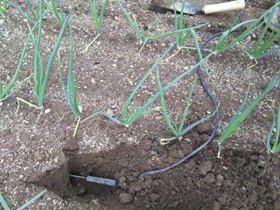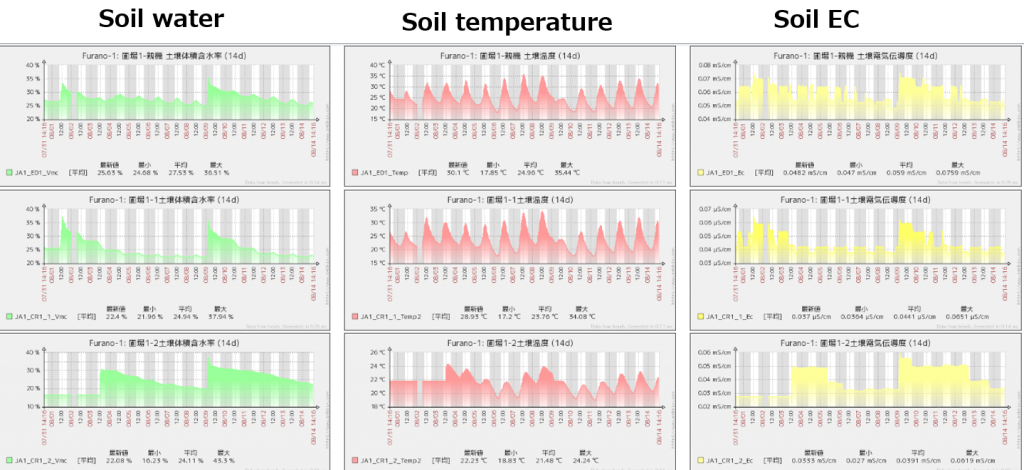Support for solving labor saving in agriculture with IoT (2)

Last time, We have explained how to understand the outdoor growing environment.
Previous article: Support for solving labor saving in agriculture with IoT
In this article, We will explain how to understand the soil environment, which has a great impact on the growth of crops.
Elements of soil sensing
Suitable soil depends on the land and plants.
It is no exaggeration to say that soil affects the quality and yield of agricultural products.
Indicators that can be obtained by soil sensors include factors such as water content, temperature, and electrical conductivity.
If these indicators are appropriate, it cannot be said that the soil is appropriate, but it is thought that the soil environment can be grasped to some extent, such as when watering and fertilizer are applied.
| Indicator | Contents |
| Water content | It is an indicator of whether the soil contains the appropriate amount of water that the plant can absorb. |
| Temperature | It is necessary to confirm that the temperature is appropriate for each plant. |
| Electrical conductivity | It is an index that contains nitrogen fertilizer given to plants. |
About soil sensor, we will introduced in a separate article.
Set up soil sensors in the field
CM Engineering Co., Ltd. installed soil sensors at multiple points in the field and collected data to support farming.
An example of installing a soil sensor in a field is shown below.
This sensor can measure soil moisture content, soil temperature, and soil electrical conductivity (EC).
This makes it possible to grasp the timing of watering, the optimum temperature of the soil during cultivation, and the state of nitrogen fertilizer by measuring the electrical conductivity of the soil.

The photo above is a soil sensor used in an actual field.
This soil sensor can measure all three factors: soil moisture, temperature, and electrical conductivity.
This sensor is connected to a sensor node and placed at multiple points in the field to wirelessly transmit the sensed data to the Gateway.
Example of sensing results

The graph above shows the results of monitoring by installing sensors at three locations in the actual field.
You can see the result that the water content of the soil increases at the timing of watering and gradually decreases.
The soil temperature is almost linked to the daily temperature change, but the result is that it retains some heat.
Soil conductivity depends on fertilizer and water content, which can be analyzed to get fertilizer status.
In this monitoring, as with the weather conditions, we are only looking at the graph, but how to interpret this and what kind of action to take is important.
This makes it possible to grasp the soil environment remotely.
If you would like to know more about this, please feel free to contact us.
